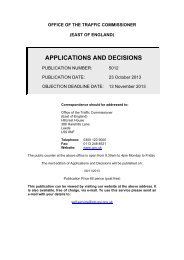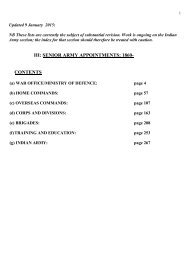2001_000
2001_000
2001_000
You also want an ePaper? Increase the reach of your titles
YUMPU automatically turns print PDFs into web optimized ePapers that Google loves.
University of Leicester Archaeological Services<br />
suggest, with some degree of confidence, that the Mill Lane<br />
ditch dates to the period after the first siege. Less clear,<br />
however, is whether this was a Royalist work completed<br />
before June 16th, or a later Parliamentarian defence. The<br />
least truncated section of the ditch permits some appreciation<br />
of the original scale of this earthwork. With an equivalent<br />
bank on the north-west side, the difference in height between<br />
base of ditch and top of bank would have been somewhere<br />
in the region of 6.5m. Given the time it would have taken to<br />
construct an earthwork of this scale, it<br />
may be tentatively suggested that it was<br />
probably not completed until after the<br />
town’s recapture by Parliamentarian<br />
forces.<br />
Few finds were recovered from the ditch,<br />
which would have been regularly cleaned<br />
out when in use, and was quickly<br />
backfilled following the end of the conflict.<br />
A single lead musket ball was found<br />
embedded in the north-west side of the<br />
ditch, however. Weighing 0.8 ounces (20<br />
shot to the pound), this is smaller than the<br />
standard sized musket shot (12 to the<br />
pound) in use at the time. Problems with<br />
the standardisation of military ordnance<br />
were not uncommon, however, and 20 to<br />
the pound shot has been found in quantity<br />
at other Civil War period sites. A fragment of a possible<br />
lead cannon ball was also found. This was similar in size to<br />
iron cannonballs of the period previously found in the area,<br />
lead cannonballs were certainly used at the siege of<br />
Leicester and one was found embedded in the wall of Trinity<br />
Hospital, in the Newarke, in 1901. The incomplete and<br />
distorted shape of the Mill Lane find may represent impact<br />
damage.<br />
Examination of the information from this and other sites in<br />
the vicinity where Civil War period remains have been found,<br />
together with the evidence from contemporary sources,<br />
should permit a reconstruction of the form and development<br />
of the Civil War defences around the south of the town.<br />
We would like to thank De Montfort University for their<br />
help and co-operation with this project.<br />
Above: repaired breach in the Newarke wall, adjacent<br />
to the excavation site as it appeared in the 19th century,<br />
after Hollings (1840).<br />
This site has provided the rare opportunity for archaeological<br />
evidence to be linked to well documented and dated events.<br />
17





